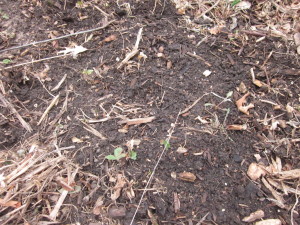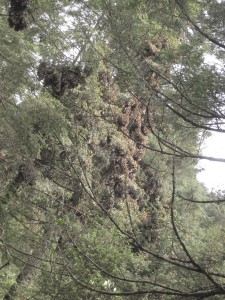Nitrates, nitrates…
Well, the semester is coming to a close again. Two more weeks of class and then finals. My corn has grown pretty tall and survived a squirrel attack, and next weekend I should be able to plant it outside: April 30 is our average last frost date in my area. It's been a nice week weather-wise, though, and so the plants are outside in my thrown-together "cold frame." I'm using soil with built-in compost for the young plants since corn is a heavy feeder, and once I move them to the ground I'll put them into areas where I've pulled up the hairy vetch (which is supposed to fix nitrogen) and added more compost. We will consider manure, but for the moment it seems like we might make it with the contents of our own compost pile this summer. The benefit of working without commercial fertilizer is that we don't have to think very hard about whether we're contributing to the nitrates in the Mississippi river -- even considering that urban areas contribute less than 10% of Minnesota's nitrate runoff.
The Star Tribune (the Minneapolis paper) had an article this weekend about nitrates in well water in the rest of Minnesota. It's costing taxpayers a lot of money -- up to $3,300 per household in some areas to install nitrate-removal equipment and ensure that people can drink the water safely! In fact, nitrates made the news because in Randall, MN, people can't drink the water safely. Nitrate levels are too high and dangerous to human health, especially babies and the elderly. The majority of nitrates in Minnesota water come from agricultural fertilizer runoff, and dealing with the runoff has become a hot local political topic. It's not just a problem in the Gulf of Mexico when it's affecting our local drinking water and lakes.
Nitrates in drinking water would be a great topic for a social studies debate. Farmers need nitrates to grow their corn at a level that provides enough for food products, corn syrup, compostable cups, and ethanol. As taxpayers we subsidize some of these uses, and as taxpayers we pay for the removal of nitrates from the water. Paying for removal of nitrates is hugely expensive: besides the initial up-front cost of the equipment, it looks like it costs 15 to 35 cents per 1000 gallons of water to do the processing and maintenance, while low-nitrate water costs only 5 to 10 cents per 1000 gallons TOTAL. That's a huge percentage increase in water costs! (The figures are from the linked Minnesota Department of Agriculture file.)
Interestingly, I couldn't find nice data online about nitrates in water in Minnesota, so I returned to the tried and true USGS data from the Raccoon River near Des Moines, Iowa. The past month's data provides enough for a numerical integration and estimation worksheet:
Numerical Integration: Nitrates
It is a pretty basic worksheet -- provides enough information for a social-studies debate starting point, but not much more. It would be very cool to make some more sophisticated optimization problems for nitrate use, to help students (and perhaps the public) think about the tradeoffs involved in agriculture and environment.



